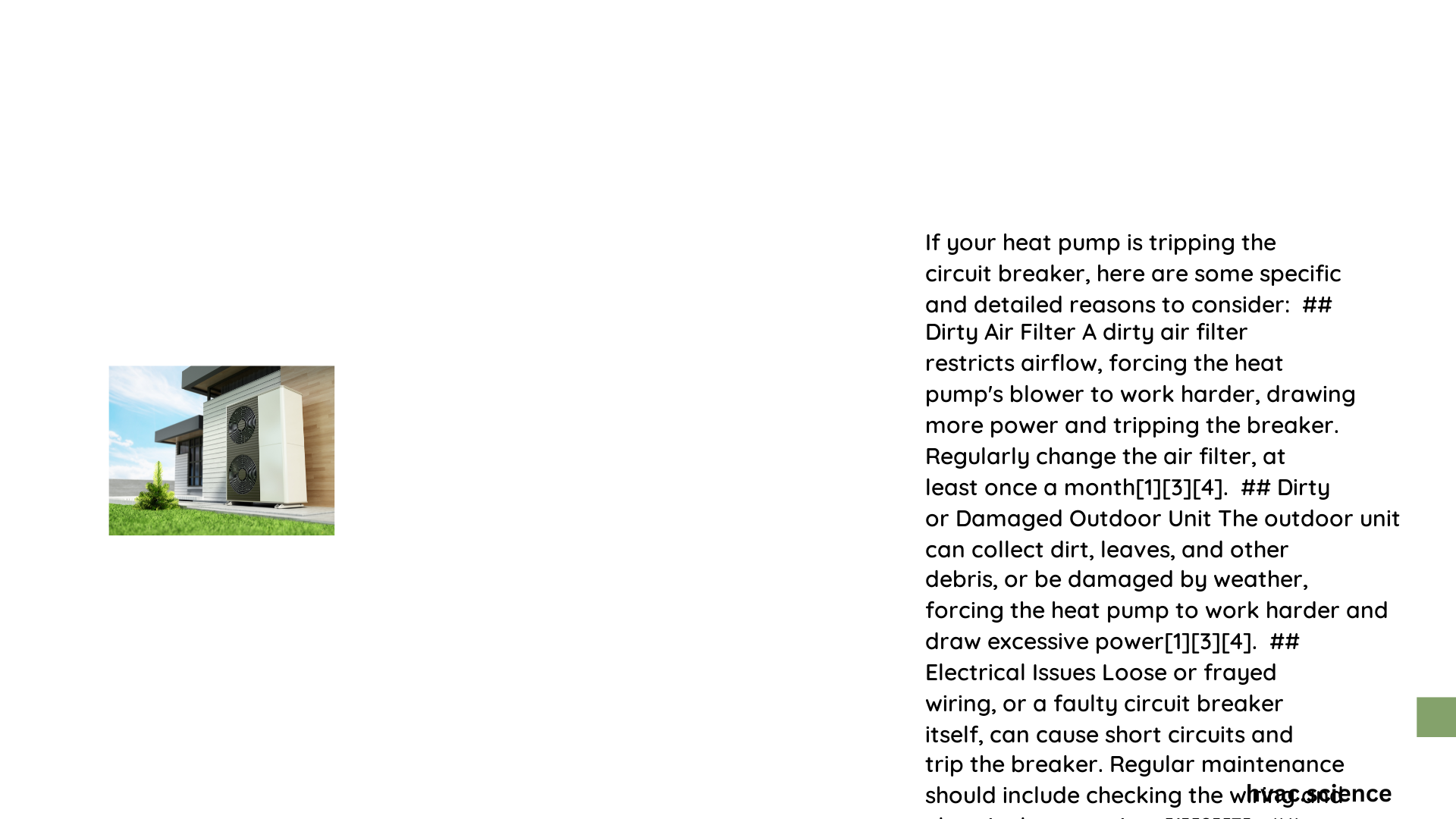A bad breaker in a heat pump can disrupt your home’s comfort and energy efficiency, causing intermittent system failures, electrical inconsistencies, and potential safety risks. Understanding the symptoms, diagnostic procedures, and repair techniques is crucial for homeowners and HVAC professionals to maintain optimal heat pump performance and prevent costly electrical complications.\n\n## What Are the Primary Symptoms of a Bad Breaker in Heat Pumps?\n\n### How Do Voltage Fluctuations Indicate Breaker Problems?\n\nVoltage fluctuations represent a critical warning sign of potential breaker issues in heat pump systems. These fluctuations can manifest through:\n\n- Intermittent system shutdowns\n- Unexpected power interruptions\n- Inconsistent heating or cooling performance\n\n### What Electrical Indicators Suggest Breaker Malfunction?\n\n| Indicator | Potential Significance |\n|———–|————————|\n| Frequent Tripping | Overloaded Circuit |\n| Burning Smell | Potential Electrical Damage |\n| Visible Scorch Marks | Serious Electrical Fault |\n\n## How to Diagnose a Bad Breaker in Heat Pumps?\n\n### What Tools Are Required for Diagnosis?\n\nProfessional diagnosis requires specific tools:\n\n1. Digital multimeter\n2. Non-contact voltage tester\n3. Insulated safety gloves\n4. Circuit analyzer\n\n### What Steps Involve Breaker Troubleshooting?\n\nA systematic approach ensures accurate diagnosis:\n\n- Disconnect power supply\n- Visually inspect breaker for physical damage\n- Measure voltage and current using multimeter\n- Check for loose connections\n- Test breaker’s resistance and continuity\n\n## What Causes Breaker Failure in Heat Pumps?\n\n### How Do Environmental Factors Impact Breaker Performance?\n\nSeveral environmental elements contribute to breaker degradation:\n\n- High humidity levels\n- Extreme temperature variations\n- Dust and debris accumulation\n- Corrosive atmospheric conditions\n\n### What Electrical Factors Trigger Breaker Malfunction?\n\n- Persistent electrical overloads\n- Sudden power surges\n- Manufacturing defects\n- Age-related component deterioration\n\n## What Are Recommended Repair Strategies?\n\n### How Should Professionals Replace a Faulty Breaker?\n\n1. Verify exact breaker specifications\n2. Purchase compatible replacement\n3. Disconnect electrical supply\n4. Remove old breaker\n5. Install new breaker\n6. Conduct comprehensive system testing\n\n### What Preventive Maintenance Techniques Minimize Breaker Issues?\n\n- Regular electrical system inspections\n- Annual professional HVAC maintenance\n- Installing surge protection devices\n- Monitoring electrical load distribution\n\n## Cost Considerations for Breaker Replacement\n\n| Service Type | Estimated Cost Range |\n|————-|———————-|\n| Breaker Replacement | $50 – $250 |\n| Professional Diagnosis | $75 – $150 |\n| Complete Electrical Evaluation | $150 – $400 |\n\n## Critical Safety Recommendations\n\n- Always disconnect power before inspection\n- Use appropriate personal protective equipment\n- Consult licensed electrician for complex issues\n- Never attempt repairs without proper knowledge\n\n### Conclusion\n\nAddressing bad breaker heat pump problems requires systematic diagnosis, professional expertise, and proactive maintenance. Understanding potential indicators, implementing timely interventions, and prioritizing safety can prevent extensive electrical damage and ensure optimal heat pump performance.\n\n### Reference:\n- HVAC Troubleshooting Guide\n- Electrical Safety Resources\n- Heat Pump Maintenance Manual

